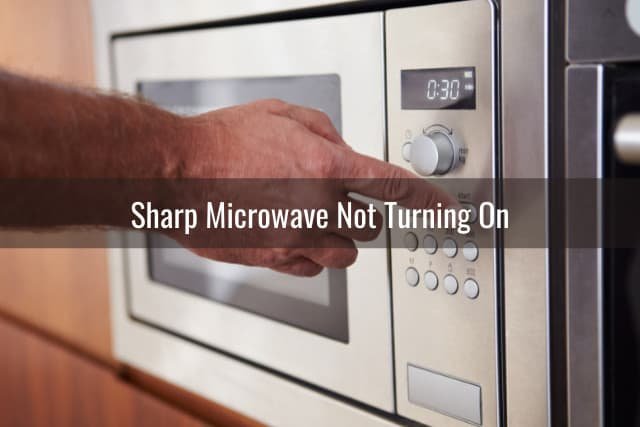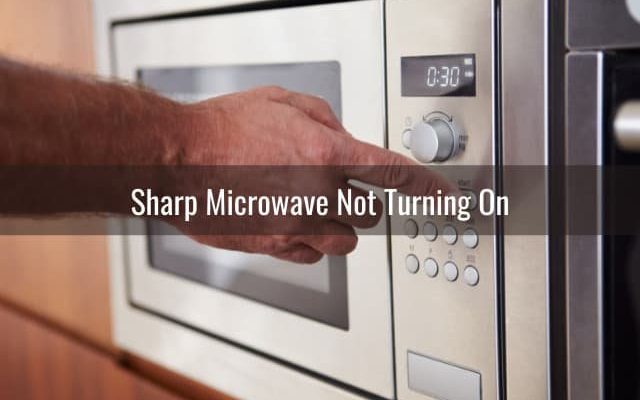
Now, you might wonder, what’s the big deal with this E1 error? Can you just ignore it and keep using your microwave as if nothing’s happened? Let’s dive into what this error means. The E1 error typically signals a communication breakdown inside your microwave — a bit like when your internet drops out, and you can’t chat with friends online. While the appliance might still turn on, it’s essentially trying to tell you there’s an underlying issue that needs addressing. Ignoring it might not only reduce the microwave’s lifespan but could also lead to some not-so-great side effects. So, let’s explore why fixing it is a must!
Understanding Error E1 in Sharp Microwaves
The E1 error code on a Sharp microwave often indicates a problem with the electronic control system. Think of this system as the brain of your microwave. It controls the timing, power levels, and overall operation of the unit. When the E1 error shows up, it points to a miscommunication within this intricate network. Essentially, it’s like the microwave’s brain is experiencing a short circuit, causing all sorts of operational hiccups. Without this system running smoothly, other components won’t be able to perform their tasks efficiently.
A common cause of the E1 error might be a fault in the keypad or touchpad. Imagine if your smartphone screen wouldn’t respond; it would be frustrating, right? Similarly, when the keypad malfunctions, the microwave can’t understand your commands. Another possible reason is an issue with the control board, which is like a mini computer inside the microwave. If it’s not working properly, it struggles to send and receive signals correctly, much like how a faulty GPS might send you to the wrong location.
It’s also worth noting that electrical surges or power fluctuations could trigger this error. Just as a lightning strike can knock out your home’s power briefly, a sudden surge can jolt the microwave, causing temporary confusion within its systems. If the E1 error is a frequent visitor, it might be time to examine these potential culprits and consider whether a professional repair is needed to keep your microwave in tip-top shape.
Consequences of Ignoring Error E1
Ignoring the E1 error code might seem like a tempting choice, especially if the microwave seems to be functioning fine at first glance. However, continuing to use it without addressing the issue can lead to more severe problems. For starters, the efficiency of your microwave can drastically decrease. Imagine trying to run a marathon with a sprained ankle — it’s not going to be effective, and it will hurt in the long run. Similarly, the microwave might heat food unevenly or take longer, wasting time and energy.
Worse still, prolonged use with an unresolved error might lead to further damage. Key components, like the magnetron (which produces the microwaves that cook your food), could become overworked or overheated. This could potentially shorten the appliance’s lifespan, leading to costly repairs or even the need for a complete replacement. In an extreme scenario, ignoring such issues might even pose safety risks, as faulty electronics could, in rare cases, lead to fires.
Therefore, addressing the E1 error promptly not only ensures your microwave operates efficiently but also keeps your kitchen safe. It’s better to resolve the issue early than face a hefty bill or a compromised appliance later. So, if you spot the E1 code, it’s a sign to investigate — not a problem to push aside.
Resolving Error E1
When it comes to fixing the E1 error, the first step is a simple one: unplug the microwave. Just like rebooting your computer can solve many tech glitches, unplugging the microwave for a few minutes allows it to reset. If the error persists once you plug it back in, it indicates a deeper issue that might need more than a quick fix. At this point, checking the manual for troubleshooting tips specific to your model can be helpful.
If you’re comfortable doing minor repairs, inspect the keypad and control board for visible signs of wear or damage. However, if you’re not confident in your DIY skills or if the microwave is still under warranty, it’s wise to call in a professional. Expert technicians can quickly diagnose the problem and find the right solution, ensuring the microwave is repaired properly without risking further damage.
Additionally, it’s a good idea to protect your microwave from power surges by using a surge protector. Just as you’d use one to shield your computer or TV, this simple step can prevent unnecessary electrical hiccups in the future. Ultimately, keeping your microwave in good health requires occasional check-ups, just like any other appliance in your home.
Preventative Tips to Avoid Future Errors
To keep error codes at bay, regular maintenance is key. Think of it as giving your microwave a little TLC now to save you from bigger headaches later. Cleaning the appliance regularly not only keeps it looking new but also prevents food particles from mucking up the interior workings. Imagine your microwave’s vents getting clogged — it’s similar to trying to breathe through a blocked nose and can lead to overheating.
Keep an eye on how you use your microwave, too. Avoid slamming the door, as this can wear out the latch and other components. Treat it gently, like you would a fragile vase; closing the door softly ensures longevity. Additionally, don’t overload it with excessively heavy dishes, as this can strain the rotating mechanism over time.
Lastly, make sure you’re using the right power settings for your cooking needs. Running the microwave on high for extended periods isn’t always necessary and can stress internal components. Use lower settings for reheating or defrosting to prevent overheating. By following these simple tips, you can minimize the chances of error codes and enjoy your Sharp microwave for years to come.
